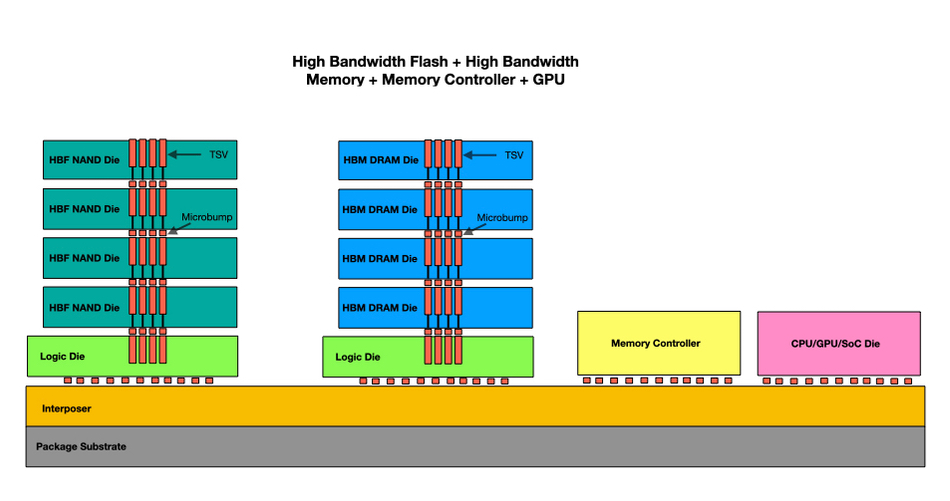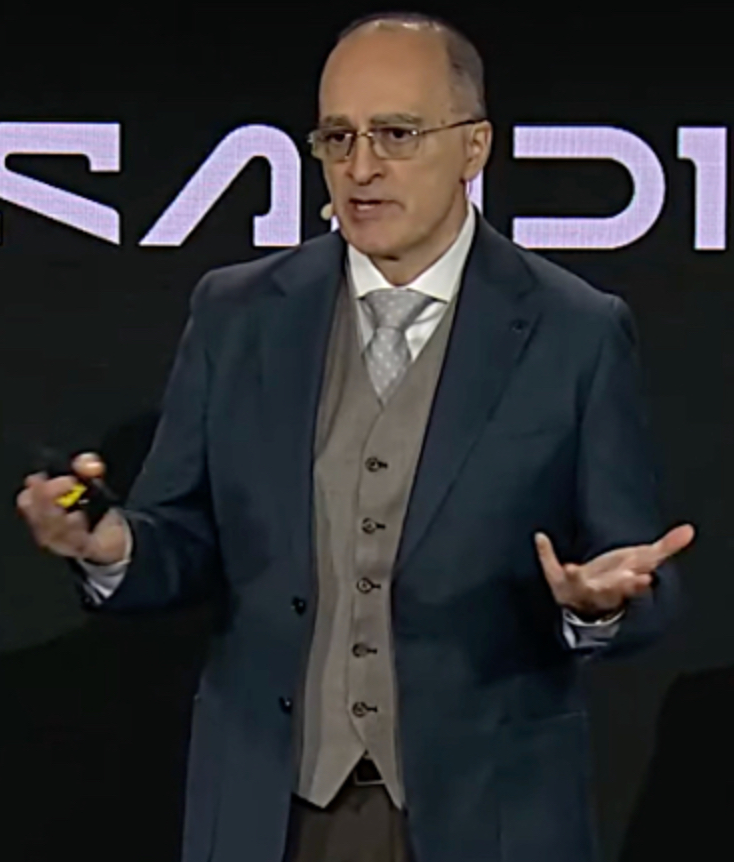Sandisk and High Bandwidth Memory (HBM) market leader SK hynix are working together to standardize High Bandwidth Flash (HBF).
HBF technology is aimed at giving GPUs fast access to large amounts of NAND capacity to augment the relatively limited capacity of their HBM, so accelerating AI training and inference workloads by avoiding time-consuming data accesses to PCIe-linked SSDs. Like HBM, the HBF chip is formed from stacked layers, of NAND in this case, with TSV connectors linking each layer to a base interposer, which provides fast access to the GPU. The HBF access could be orders of magnitude faster than that to an SSD.

The involvement of SK hynix is significant, as it developed and supplies HBM and has deep expertise in the HBM-interposer-GPU area, and thus how HBF could be implemented alongside it. The two companies have signed a Memorandum of Understanding (MoU) and aim to standardize the specification, define technology requirements, and explore the creation of a technology ecosystem for HBF.

Alper Ilkbahar, Sandisk EVP and CTO, and HBF Technical Advisory Board member, stated: “By collaborating with SK hynix to define the High Bandwidth Flash specification, we are addressing the critical need for scalable memory in the AI industry. This collaboration accelerates innovation and will offer the industry new tools to handle the exponential data demands of tomorrow’s applications. Our work will help provide an effective solution to meet the world’s technology needs and exceeds expectations of our respective customers.”
Dr Hyun Ahn, president and chief development officer (CDO) at SK hynix, added: “Through our work with Sandisk to standardize the High Bandwidth Flash specification, we are actively contributing to the commercialization of this innovative technology, which we believe is key to unlocking the full potential of AI and next-generation data workloads.”
The HBM3E generation provides up to 1.2 TBps bandwidth and 48 GB of capacity. An SK hynix PCIe Gen 5 PCB01 SSD can provide up to 14 GBps sequential read bandwidth, 86 times slower than HBM3E’s data rate.

HBF is targeted to offer comparable bandwidth to HBM while delivering up to 8-16x the capacity of HBM at a similar cost. That would be up to 768 GB.
The MoU implies that SK hynix could produce and supply its own HBF. This suggests that Sandisk appreciates the need to have a multi-supplier HBF market, to reassure customers that: first, they won’t be locked into a single supplier; second, that competition will accelerate HBF development; and third, that supply will be maintained even if one vendor fails.
Get Nvidia on board with HBF technology acceptance and standardization, and it’s a done deal.
Sandisk’s HBF technology was awarded “Best of Show, Most Innovative Technology” at FMS: the Future of Memory and Storage 2025.
Sandisk intends to deliver first samples of its HBF memory in the second half of calendar 2026 and expects samples of the first AI inference devices with HBF to be available in early 2027. These could even be handheld devices as well as notebooks, desktops, and servers.








